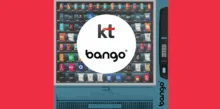Opportunity knocks for mobile operators
by Sukey Miller

As the app economy continues its explosive growth, the world’s mobile network operators (MNOs) are fighting tenaciously to secure revenue from the mobile commerce flowing across their networks. As this battle between the MNOs and over the top services develops, operator billing is emerging as the most powerful weapon in the MNO armory.
By leveraging their trusted billing relationship with smartphone users, and offering a frictionless one-click payment experience, MNOs extending the use of operator billing are not just connecting to a world of commercial opportunity, they’re enhancing the user experience, driving up conversion rates and providing a boost to the entire app economy.
In the developing world, the smartphone market looks set to boom. This year Canalys have forecast that developing markets will see smartphone growth of 22.5%, much of that growth from within the BRIIC countries. In raw numbers, they predict that 837 million smartphones will be shipped globally this year.
Within these developing world markets, there tends to be a high proportion of unbanked consumers, low credit card penetration and large numbers of prepaid consumers. For such users, their operator connection may be their sole credit-based or pre-paid agreement. Assuming appropriate and compelling content is available, such markets will be fertile ground indeed for operator billing.
Progress is being made. Mozilla is soon to launch a suite of smartphones, powered by their own OS, and boasting a new content ecosystem named Firefox Marketplace. This range is specifically aimed at “the next billion” smartphone consumers, mainly derived from the developing world and global mobile operators, led by Telefónica, have shown strong support for the initiative. Mozilla have placed operator billing at the heart of their monetization strategy, ensuring the keen involvement of the operator community.
The opportunity is more nuanced in developed world markets. While spectacular growth numbers might be limited to developing markets in the years ahead, the smartphone market will continue to grow in developed markets, according to several recent reports. For example, ZenithOptimedia has forecast that smartphone penetration in the world’s top 19 digital markets will double, from 35.5% last year to an average of 71.7% by 2015.
With the ability to leverage the pre-existing billing relationship with customers, there is an established confidence for payments which compares favorably with our confidence in sharing credit/debit card details over the mobile web, particularly over Wi-Fi. Adding a charge to our phone bill is seen as comparatively secure after reading any of a dozen frightening exposés into smartphone security flaws.
Operator billing is particularly flexible and appropriate to micro transactions. The ability to offer subscriptions, in-app payments and timed access models has been shown to increase both conversion rate and revenue. Without fixed minimum transaction fees, operator billing is ideally suitable to very low value, recurrent billing.
Consumers with poor credit or those choosing not to take a credit card are likely to benefit from an operator billing choice. Those under 16 years are automatically excluded from payment cards of any type, but few would argue that they should be excluded from mobile commerce completely. Experience shows that operators can increase customer loyalty by regularly reinforcing the billing and marketing relationship. Regular use of operator billing, particularly in response to marketing initiatives, can serve to continually reinforce the trust relationship that is vital to customer loyalty.
It would appear that offering the choice of operator billing will itself increase sales. Dr. Windsor Holden, research director of Juniper Research has said that “simply by offering consumers a billing choice, monetization rates will rise dramatically.” Our own analysis at Bango underlines this important point. The optimal position is to offer operator billing and alternative payment methods, to capture the greatest number of sales of digital content.
Analysis conducted by Juniper Research released in March of this year suggests that revenues from mobile content, monetized through direct operator billing, are expected to rise from $2bn in 2012 to more than $13bn by 2017. It’s clear that the operator billing opportunity is vital for today’s operators. It marks both a direct revenue stream and the beginning of the fight-back against the services which have challenged MNO revenues since the emergence of the smartphone.
![]()
Subscribe to our newsletter
Get the latest subscription bundling news and insights delivered straight to your inbox.



